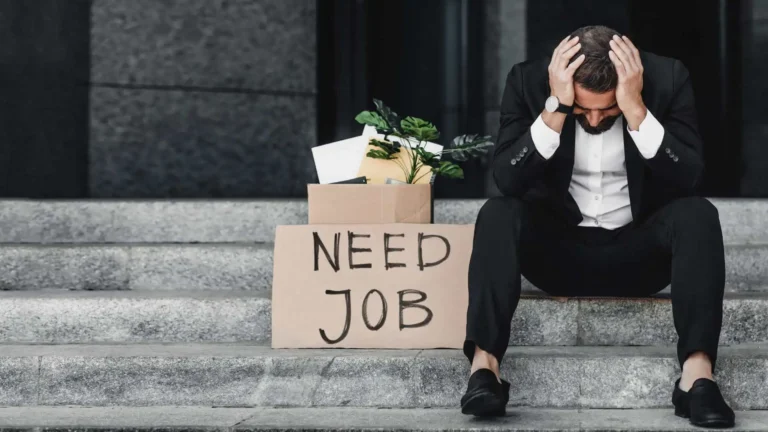Table of Contents
Introduction
Losing a job is never just a financial event; it’s a personal one. It interrupts more than income — it disturbs routine, self-worth, and a sense of direction. That’s where Money Strategies After a Job Loss become essential. Amid the noise of anxiety and uncertainty, one fact remains steady: the money decisions made in the first few weeks after a layoff will shape how manageable the months ahead feel.
Whether the departure was sudden or a choice made reluctantly, regaining control begins with structure. The emotions may take time to settle, but numbers respond to clarity. A practical plan, built on facts rather than panic, can turn a setback into a reset. What follows is not theory; it is a set of practical actions designed to help anyone navigate unemployment with stability and a clear mind.
Step 1 – Assess Your Financial Situation Immediately
The first step is not glamorous, but it is indispensable. A person must know exactly where they stand. That means listing every account, every due bill, every dollar expected from severance or side work. Many avoid this step out of fear, as if looking at the truth might make it heavier. In reality, it does the opposite: it makes the problem measurable.
This stage involves creating a financial map. Rent, utilities, food, and insurance stay at the top. Non-essentials can wait. It helps to mark what is critical for survival versus what merely fills comfort gaps. That separation, though uncomfortable, brings order to uncertainty.
When the numbers are written down, the fog lifts a little. The person who knows their actual financial runway — two months, four months, six months — makes decisions based on information, not fear. Panic spends money; clarity preserves it.
Also Read: Home Office Spend: Ergonomics and Tax Tie-Ins
Step 2 – File for Unemployment Benefits Right Away
Some people don’t apply for unemployment benefits because pride gets in the way, or the process is too lengthy and complicated. That delay costs. The system operates on waiting, verification, and bureaucracy, none of which happens fast. The earlier the application is made, the sooner the help comes.
Each state has its own regulations, and navigating them can be challenging. Nevertheless, this short-term income stabilizes cash flow while longer plans solidify. Unemployment pay is not an act of charity; it is an insurance policy paid through years of labor.
When those funds begin arriving, they buy time. And time, during a transition, is the most valuable currency available.
Step 3 – Build a Short-Term Financial Survival Plan
Once the basics are visible, the next step is to design a short-term plan, not a dream budget, but a survival plan. Three to six months of bare-minimum expenses, written clearly. This is where every subscription, every automatic payment, every discretionary habit is tested for necessity.
Some find it useful to operate from a separate checking account dedicated only to essentials. That separation reduces the temptation to spend casually. Others lean on digital tools that track daily spending. Whatever the method, the goal is control.
Beem’s Instant Cash can serve as a small safety valve, a means to cover an emergency gap without turning to high-interest credit cards. Used with restraint, it prevents small shortfalls from spiraling into debt. The keyword is restraint.
Step 4 – Protect Your Emergency Fund
If there is an emergency fund, it deserves respect. It is not there to soften lifestyle discomfort; it exists to protect stability. Rent, medical bills, and food are the top priorities. Streaming services and leisure purchases can wait.
It is tempting to draw from retirement accounts, but that path carries hidden costs, penalties, lost growth, and reduced long-term security. Once those funds are gone, rebuilding them takes years.
The wiser move is conservation: spend only what must be spent, and protect the remainder until income resumes. When a new job arrives, the first small act of recovery should be replenishing that emergency fund, even if it’s done slowly. That act signals the return of balance.
Step 5 – Reevaluate Debt and Monthly Obligations
Debt does not pause because employment ends, but lenders are not without flexibility. Reaching out early to discuss hardship options is a sign of responsibility, not weakness. Many institutions offer temporary payment relief, deferments, or lower-interest restructuring for those who communicate honestly.
The focus should be on high-interest debts, such as credit cards and personal loans that compound quickly. Paying only minimums may buy time, but it adds weight to the future. A well-structured consolidated plan can simplify monthly management and preserve credit health.
The objective is not perfection. It is sustainability. In times like these, maintaining credibility with lenders matters more than meeting every deadline flawlessly.
Step 6 – Review Insurance and Health Coverage
Employment often shields people through benefits they barely think about until they are no longer available. Health coverage is chief among them. Losing it without replacement is a silent risk, one that can turn an unexpected illness into a financial crisis.
The options exist, though none feel effortless. COBRA extends previous coverage, though it can be expensive. The ACA marketplace offers alternatives, sometimes with subsidies that ease the burden. A partner’s plan may also provide interim relief.
What matters is not the perfection of choice, but the continuity of protection. Beem’s partner insurance options can fill the gap affordably, serving as a bridge until the next employer plan begins. This step may seem secondary when income is uncertain, but it is, in fact, central because medical emergencies do not wait for financial recovery.
Step 7 – Explore Alternative Income Sources
Unemployment does not always mean inactivity. The modern economy enables skill-based, project-based, and freelance work that can supplement one’s income. A designer can take on short-term contracts; a teacher can offer online tutoring; a manager can provide consulting services. These are not long-term solutions, but they sustain motion, and motion keeps morale intact.
Selling unused items, renting equipment, or sharing resources may seem minor, but they generate cash and restore agency. Even small earnings provide psychological stability. They remind a person that they are still capable of producing value, even in transition.
Diversified income streams will not replace a full salary, but they reduce dependence on a single source. In the long view, this adaptability becomes a strength.
Step 8 – Rethink Your Budget and Lifestyle Temporarily
Budget revision is never pleasant. It forces acknowledgment that comfort must shrink, at least for a while. But acceptance turns sacrifice into discipline.
Every expense deserves to be questioned: subscriptions, memberships, conveniences that once went unnoticed. Many discover how much routine spending can be trimmed without sacrificing quality. Using cashback programs, discount tools, and budgeting apps helps stretch available funds further.
If an emergency arises, Beem’s Instant Cash can serve as a temporary bridge, preferable to running up credit card interest. Still, it should remain a short-term measure, not a habit. The purpose here is to preserve independence, not defer the problem.
Over time, living lean teaches something quietly powerful: that security comes less from income level and more from control over expenses.
Step 9 – Focus on Upskilling and Career Rebuilding
The months following a layoff can either become a period of idleness or a deliberate period of reconstruction. Learning new skills is the difference. The employment market changes rapidly, and those who utilize this time to build up capabilities return with an advantage.
Free and affordable courses now abound for almost any vocation, including data analytics, marketing, design, and technical trades. Even two hours of organized study each day adds up to a competitive advantage.
Networking is also crucial. Most jobs never make it to public postings; they move discreetly through referrals and word of mouth. Remaining visible, even during a layoff, helps maintain momentum.
This stage cannot be viewed solely as a recovery, but rather as a redesign. It provides the opportunity for people to shift into sectors that promise greater resilience, development, or value conformity. The failure becomes, in fact, a turning point.
Step 10 – Rebuild Confidence and Plan for the Long Term
When income resumes, the instinct is to restore the lost comfort quickly. But discipline here determines future strength. Rebuilding savings must take priority, even if contributions are modest.
A small automatic transfer each month into a separate account builds momentum. Over time, those contributions compound not just in value but in confidence. Financial recovery mirrors emotional recovery, a steady, deliberate, and cumulative process.
It is also wise to maintain side income or investment habits developed during unemployment. These provide both flexibility and security if the job market shifts again. Diversifying income sources transforms vulnerability into resilience.
The final stage is not about returning to how things were. It is about building a version of financial life that can endure interruption without collapse. That is what long-term security truly means.
Also Read: Emergency Kit Spending: Phased Essentials
Conclusion
Job loss is a pause, not an ending. It tests composure, discipline, and adaptability, but it does not define failure. Financial resilience grows through methodical planning, not optimism alone.
With structured steps, assessing, budgeting, protecting, and rebuilding, anyone can move from instability to renewed strength. Download the Beem app for tools like Everdraft™ that serve not as rescue lines but as support for those taking active control.
What begins as disruption can end as transformation when choices are deliberate and grounded. In the end, stability is not restored by circumstance but by the steady, thoughtful actions of the person determined to reclaim it.
FAQs About Money Strategies After a Job Loss
What should I do financially in the first week after losing my job?
In the first week, focus on clarity. Assess all accounts, calculate available funds, and list every upcoming bill. File for unemployment immediately and pause discretionary spending. The goal is to create stability before acting on emotion.
How long should my emergency fund last after being laid off?
It should cover three to six months of essential expenses, including rent, food, utilities, and insurance. If it falls short, strict budgeting extends its lifespan while new income sources are explored.
Should I use my credit card or savings to pay bills after losing my job?
Savings come first, but only for necessities. Credit cards should be avoided for recurring expenses due to the accumulation of interest. If liquidity is tight, consider seeking short-term aid, such as Beem’s Instant Cash, before resorting to high-interest debt.
How can I find affordable health insurance after losing employer coverage?
Explore COBRA for immediate continuity, though it can be costly. Compare ACA marketplace plans, which may offer subsidies to help offset the cost of coverage. Partner coverage or Beem’s insurance options can serve as temporary solutions until new employment begins.
How does Beem’s Instant Cash help during unemployment?
It provides short-term financial flexibility without the long-term burden of high interest. When used responsibly, it bridges gaps between income sources and protects savings during the transition.















































